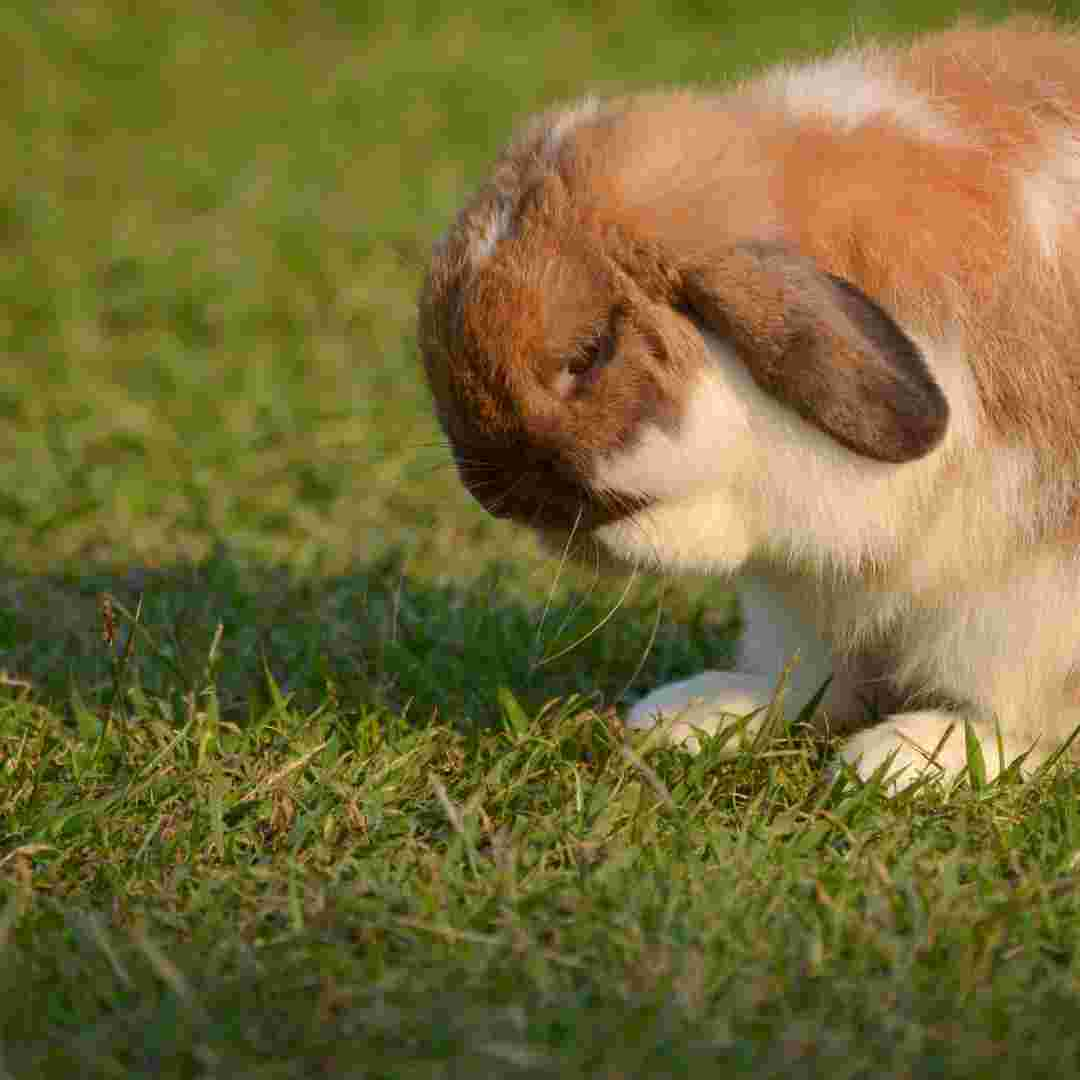Contents Table
Introduction
The Pros and Cons of Outdoor Rabbits
Making Your Rabbit's Outdoor Environment Safe
Considerations Before Putting Your Rabbit Outside
Indoor vs. outdoor rabbit care benefits
Prepare Your Rabbit for Outdoor Living
Q&A
Conclusion
Introduction
Rabbits are popular pets, although their indoor or outdoor home is debatable. Some say rabbits should live indoors, others outside. We'll discuss the merits and cons of both living arrangements and offer ideas for keeping rabbits safe and healthy in either. The rabbit's demands and the owner's ability to offer a safe and comfortable environment should determine whether to keep a rabbit indoors or outdoors.
The Pros and Cons of Outdoor Rabbits
Outdoor rabbit ownership can benefit both bunny and owner. There are perks and cons to consider before keeping a rabbit outside.
Pros
The main benefit of keeping a rabbit outdoors is letting it live more naturally. Rabbits are lively and eager to explore. The rabbit has lots of space to explore, fresh air, and sunlight in an outside cage. Outdoor enclosures can also keep rabbits safe while letting them play outside.
Indoor rabbits can make a mess and smell, but having one outside can help. Rabbit excrement can be contained in outside cages to maintain the environment clean and odor-free.
Cons
Outdoor rabbits are harder to monitor, which is the main drawback. Outdoor rabbits are more prone to illness and injury due to weather. Outdoor rabbits may also be preyed upon by cats and dogs.
Outdoor rabbits may be harder to socialise and interact with. Outdoor rabbits may have behavioural difficulties due to less human contact.
Outdoor rabbit ownership can benefit both bunny and owner. Before keeping a rabbit outside, weigh the pros and cons.
Making Your Rabbit's Outdoor Environment Safe
Responsible pet ownership includes providing a safe outside habitat for your rabbit. As interested and active animals, rabbits benefit from outside space. Before letting your rabbit explore, be sure the area is safe.
Start with a secure enclosure. This should be robust wire mesh or wood and spacious enough for your rabbit to move around. The cage should be sheltered from direct sunshine and other heat sources. It should also be away from cats and dogs.
After the enclosure is set up, your rabbit needs a place to hide. This can be a hutch, cardboard box, or hay pile. This will allow your rabbit to hide if it feels threatened.
You should also give your rabbit lots of toys and hobbies. This will keep your bunny occupied and prevent boredom. Great toys include balls, tunnels, and chew toys.
Finally, regularly inspect the cage for risks. This involves looking for sharp objects, loose wires, and other hazards to your rabbit. Also look for predator footprints or droppings.
These procedures will make your rabbit's outdoor surroundings safe. This lets your rabbit explore the outdoors while protecting it from harm.
Considerations Before Putting Your Rabbit Outside
Several aspects must be considered before letting your rabbit outside.
First, make sure your rabbit is healthy and vaccinated. Outdoor rabbits are more prone to sickness and parasites, so make sure yours is healthy before letting them outside.
Second, provide your rabbit a secure environment. This means cats, dogs, and other predators should not be present. A fence or other barrier should also be used to keep your rabbit in.
Third, give your rabbit shelter. Possibly a hutch, shed, or large dog kennel. Your rabbit needs a spacious, well-ventilated shelter. The shelter should also be shaded to protect your rabbit from the sun and rain.
Fourth, provide your rabbit a balanced diet. This includes hay, fresh veggies, and some pellets. Please give your rabbit fresh water regularly.
Finally, watch your rabbit's health and behaviour. You should take your rabbit to the vet promptly if its behaviour or health changes.
Take time to consider these elements to keep your rabbit safe and healthy outside.
Indoor vs. outdoor rabbit care benefits
Bunnies are popular pets, and many people wonder if they should keep them indoors or outside. While all alternatives offer merits, keeping rabbits indoors has several important advantages.
Indoor rabbits are safe and secure. Outdoor rabbits are susceptible to foxes, hawks, cats, and harsh weather. Keep rabbits indoors to avoid these threats and safeguard them.
Second, indoor rabbits benefit from family life. Indoor rabbits can socialise with their owners, reducing stress and improving their health. Outdoor rabbits may be bored and lonely due to lack of socialisation.
Third, keeping rabbits indoors improves health monitoring. Indoor rabbits can be continuously monitored for disease or injury, ensuring timely medical attention if needed. Outdoor rabbits may be neglected, causing major health difficulties.
Finally, rabbits indoors make cleaning and maintenance easier. Indoor rabbits can be housed in cages or pens that are easy to clean, whereas outdoor rabbits may need more care.
Finally, keeping rabbits indoors provides a safe and secure environment, allows them to be part of the family, improves health monitoring, and simplifies cleaning and upkeep. Both indoor and outdoor living have benefits, but rabbits are healthier indoors.
Prepare Your Rabbit for Outdoor Living
Outdoor life can give your rabbit greater space and a natural habitat. Make sure your rabbit is ready for outdoor living before you move it. Prepare your rabbit for outdoor living with these recommendations.
1. Keep your bunny healthy. Make sure your rabbit is healthy before moving it outside. Check your rabbit for parasites and diseases with a vet.
2. Spay or neuter your rabbit. Animals may fight unaltered rabbits because they are more territorial and violent. Spaying or neutering your rabbit reduces these behaviours.
3. Enclose securely. Outdoor rabbit enclosures should be secure and escape-proof. The enclosure should be spacious enough for your rabbit to explore.
4. Make it safe. Make sure your rabbit's habitat is safe from predators. Sharp, chemical, and animal dangers should be checked.
5. Provide cosy shelter. Make sure your rabbit has a cosy place to rest or hide. Your rabbit needs a spacious, well-ventilated shelter.
6. Balance diet. Give your rabbit hay, fresh veggies, and a few pellets.
7. Give plenty of water. Give your rabbit fresh, clean water at all times.
Follow these methods to prepare your rabbit for outdoor living. With proper preparation, your rabbit may enjoy outdoor living safely and healthily.

Q&A
1. Can rabbits live outside safely?
Yes, rabbits can live outside if they have a secure, well-ventilated hutch or cage sheltered from predators and inclement weather.
2. What's rabbits' ideal outdoor environment?
Safe and comfortable environments are essential for rabbits. They should have room to move and play in the hutch or enclosure. It should be well-ventilated and protected from animals and extreme weather.
3. What should outdoor rabbits eat?
Rabbits should eat hay, fresh vegetables, and some pellets. They should always have clean, fresh water.
4. How often should outdoor rabbits be checked?
Maintaining rabbit health and safety requires daily checks. Check for illness or injury and make sure their hutch or enclosure is safe from predators.
5. What bedding should outdoor rabbits use?
Rabbits need clean, dry straw or wood shavings. This will keep them warm and give a pleasant bed.
Conclusion
Finally, whether rabbits should live outside depends on their and their owner's demands. Living outside is fine if the rabbit has a safe and secure habitat, enough of area to explore, and proper care. If the environment is unsuitable or the owner cannot care for the rabbit, confine it indoors. The rabbit's best interests should guide the decision.
